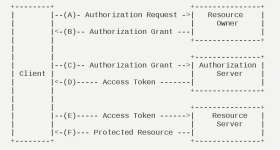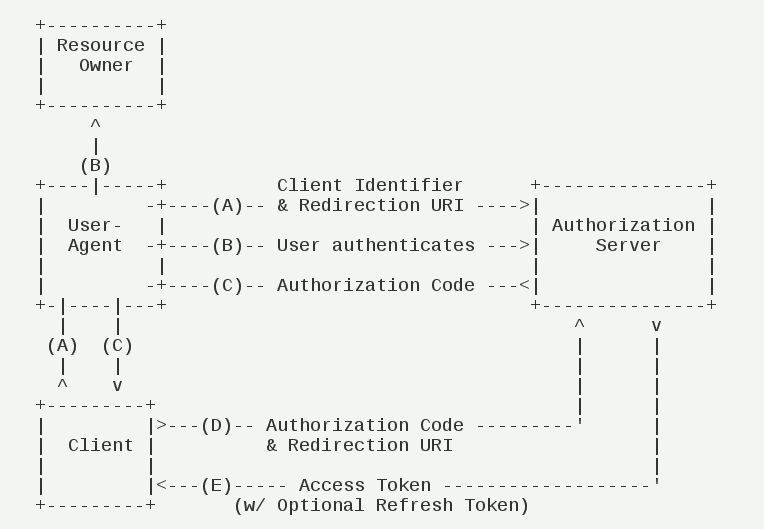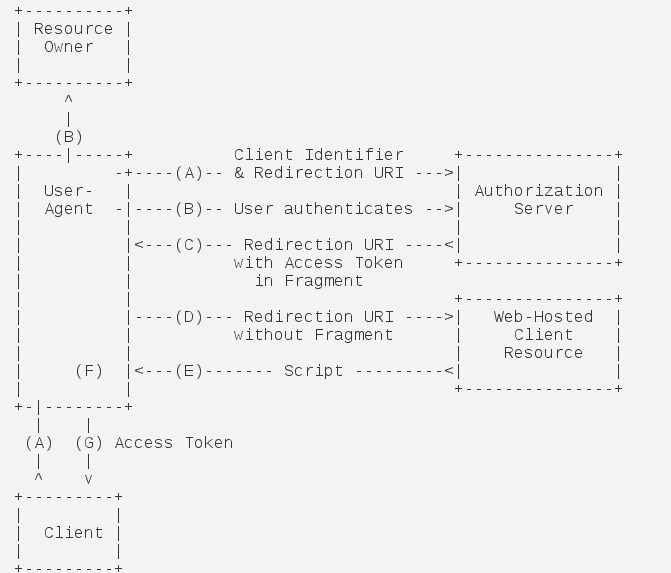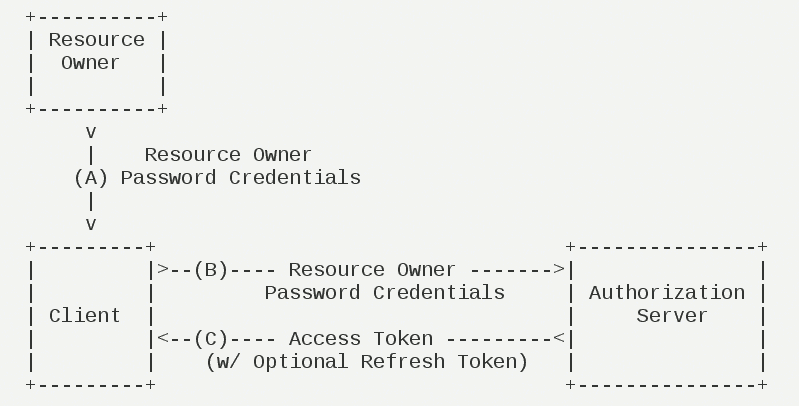一、SpringCloud Security简介
Spring Cloud Security提供了一组原语,用于构建安全的应用程序和服务,而且操作简便。可以在外部(或集中)进行大量配置的声明性模型有助于实现大型协作的远程组件系统,通常具有中央身份管理服务。它也非常易于在Cloud Foundry等服务平台中使用。在Spring Boot和Spring Security OAuth2的基础上,可以快速创建实现常见模式的系统,如单点登录,令牌中继和令牌交换。
功能:
- 从Zuul代理中的前端到后端服务中继SSO令牌
- 资源服务器之间的中继令牌
- 使Feign客户端表现得像
OAuth2RestTemplate(获取令牌等)的拦截器 - 在Zuul代理中配置下游身份验证
二、单一登录实现
1、在 SpringCloud——服务的注册与发现Eureka的基础上做修改
添加spring-security支持:
<dependency> <groupId>org.springframework.boot</groupId> <artifactId>spring-boot-starter-security</artifactId> </dependency>添加配置:
server: port: 8082 spring: application: name: eureka-client eureka: client: serviceUrl: defaultZone: http://localhost:8081/eureka/ # fetch-registry: false # register-with-eureka: false # 安全认证的配置 security: basic: enabled: true2、启动工程,浏览器访问:http://localhost:8082/test

输入用户名和密码认证,用户名为user,密码在程序启动时会输出到控制台上,如图:

登录成功后浏览器显示:
test=============8082三、配置MySQL数据库实现认证
1、添加相关依赖:
<?xml version="1.0" encoding="UTF-8"?> <project xmlns="http://maven.apache.org/POM/4.0.0" xmlns:xsi="http://www.w3.org/2001/XMLSchema-instance" xsi:schemaLocation="http://maven.apache.org/POM/4.0.0 http://maven.apache.org/xsd/maven-4.0.0.xsd"> <modelVersion>4.0.0</modelVersion> <groupId>com.example.demo.security</groupId> <artifactId>security-oauth2</artifactId> <version>0.0.1-SNAPSHOT</version> <packaging>jar</packaging> <name>security-oauth2</name> <parent> <groupId>com.example.demo</groupId> <artifactId>springcloud-security</artifactId> <version>0.0.1-SNAPSHOT</version> </parent> <properties> <project.build.sourceEncoding>UTF-8</project.build.sourceEncoding> <project.reporting.outputEncoding>UTF-8</project.reporting.outputEncoding> <java.version>1.8</java.version> </properties> <dependencies> <dependency> <groupId>org.springframework.boot</groupId> <artifactId>spring-boot-starter</artifactId> </dependency> <dependency> <groupId>org.springframework.boot</groupId> <artifactId>spring-boot-starter-test</artifactId> <scope>test</scope> </dependency> <dependency> <groupId>org.springframework.cloud</groupId> <artifactId>spring-cloud-starter-security</artifactId> </dependency> <dependency> <groupId>org.springframework.cloud</groupId> <artifactId>spring-cloud-starter-oauth2</artifactId> </dependency> <dependency> <groupId>org.springframework.boot</groupId> <artifactId>spring-boot-starter-velocity</artifactId> <version>1.1.3.RELEASE</version> </dependency> <dependency> <groupId>org.springframework.boot</groupId> <artifactId>spring-boot-starter-jdbc</artifactId> </dependency> <dependency> <groupId>mysql</groupId> <artifactId>mysql-connector-java</artifactId> </dependency> </dependencies> <build> <plugins> <plugin> <groupId>org.springframework.boot</groupId> <artifactId>spring-boot-maven-plugin</artifactId> </plugin> </plugins> </build> </project> 2、添加配置文件:
server: port: 8081 spring: application: name: security-oauth2 datasource: url: jdbc:mysql://127.0.0.1:3306/alan_oauth?allowMultiQueries=true&useUnicode=true&characterEncoding=UTF-8&useSSL=true&autoReconnect=true username: root password: admin driver-class-name: com.mysql.jdbc.Driver security: basic: enabled: false 3、相关config配置文件
创建授权配置信息类OAuthSecurityConfig.java,声明TokenStore实现和ClientDetails的实现。package com.example.demo.security.config; import org.springframework.beans.factory.annotation.Autowired; import org.springframework.context.annotation.Bean; import org.springframework.context.annotation.Configuration; import org.springframework.security.authentication.AuthenticationManager; import org.springframework.security.oauth2.config.annotation.configurers.ClientDetailsServiceConfigurer; import org.springframework.security.oauth2.config.annotation.web.configuration.AuthorizationServerConfigurerAdapter; import org.springframework.security.oauth2.config.annotation.web.configurers.AuthorizationServerEndpointsConfigurer; import org.springframework.security.oauth2.config.annotation.web.configurers.AuthorizationServerSecurityConfigurer; import org.springframework.security.oauth2.provider.ClientDetailsService; import org.springframework.security.oauth2.provider.client.JdbcClientDetailsService; import org.springframework.security.oauth2.provider.token.DefaultTokenServices; import org.springframework.security.oauth2.provider.token.TokenStore; import org.springframework.security.oauth2.provider.token.store.JdbcTokenStore; import javax.sql.DataSource; import java.util.concurrent.TimeUnit; /** * 路径:com.example.demo.security.config * 类名: * 功能:《用一句描述一下》 * 备注: * 创建人:typ * 创建时间:2018/9/26 14:25 * 修改人: * 修改备注: * 修改时间: */ @Configuration public class OAuthSecurityConfig extends AuthorizationServerConfigurerAdapter{ @Autowired private AuthenticationManager authenticationManager; @Autowired private DataSource dataSource; @Bean public TokenStore tokenStore(){ return new JdbcTokenStore(dataSource); } @Override public void configure(AuthorizationServerEndpointsConfigurer endpoints) throws Exception { endpoints.authenticationManager(authenticationManager); endpoints.tokenStore(tokenStore()); // 配置TokenServices参数 DefaultTokenServices tokenServices = new DefaultTokenServices(); tokenServices.setTokenStore(endpoints.getTokenStore()); tokenServices.setSupportRefreshToken(false); tokenServices.setClientDetailsService(endpoints.getClientDetailsService()); tokenServices.setTokenEnhancer(endpoints.getTokenEnhancer()); tokenServices.setAccessTokenValiditySeconds( (int) TimeUnit.DAYS.toSeconds(30)); // 30天 endpoints.tokenServices(tokenServices); } @Override public void configure(AuthorizationServerSecurityConfigurer oauthServer) throws Exception { //oauthServer.checkTokenAccess("isAuthenticated()"); oauthServer.checkTokenAccess("permitAll()"); oauthServer.allowFormAuthenticationForClients(); } @Bean public ClientDetailsService clientDetails() { return new JdbcClientDetailsService(dataSource); } @Override public void configure(ClientDetailsServiceConfigurer clients) throws Exception { clients.withClientDetails(clientDetails()); clients.inMemory() .withClient("client") .secret("secret") .authorizedGrantTypes("authorization_code") .scopes("app"); } } 安全服务配置类OAuthWebConfig.javapackage com.example.demo.security.config; import org.springframework.context.annotation.Configuration; import org.springframework.security.config.annotation.web.builders.HttpSecurity; import org.springframework.security.config.annotation.web.builders.WebSecurity; import org.springframework.security.config.annotation.web.configuration.WebSecurityConfigurerAdapter; /** * 路径:com.example.demo.security.config * 类名: * 功能:《用一句描述一下》 * 备注: * 创建人:typ * 创建时间:2018/9/26 14:22 * 修改人: * 修改备注: * 修改时间: */ @Configuration public class OAuthWebConfig extends WebSecurityConfigurerAdapter{ @Override public void configure(WebSecurity web) throws Exception { web.ignoring() .antMatchers("/favor.ico"); } @Override protected void configure(HttpSecurity http) throws Exception { super.configure(http); } } 自定义provider调用类SsoAuthProvider.java
package com.example.demo.security.config; import org.slf4j.Logger; import org.slf4j.LoggerFactory; import org.springframework.security.authentication.AuthenticationProvider; import org.springframework.security.authentication.UsernamePasswordAuthenticationToken; import org.springframework.security.core.Authentication; import org.springframework.security.core.AuthenticationException; import org.springframework.security.core.GrantedAuthority; import org.springframework.stereotype.Component; import java.util.Collections; /** * 路径:com.example.demo.security.config * 类名: * 功能:《用一句描述一下》 * 备注: * 创建人:typ * 创建时间:2018/9/26 14:33 * 修改人: * 修改备注: * 修改时间: */ @Component public class SsoAuthProvider implements AuthenticationProvider{ private static final Logger log = LoggerFactory.getLogger(SsoAuthProvider.class); @Override public Authentication authenticate(Authentication authentication) throws AuthenticationException { log.info("自定义provider调用"); 返回一个Token对象表示登陆成功 return new UsernamePasswordAuthenticationToken(authentication.getPrincipal(), authentication.getCredentials(), Collections.<GrantedAuthority>emptyList()); } @Override public boolean supports(Class<?> aClass) { return true; } } 4、需要一个重定向的controller类
package com.example.demo.security.controller; import org.slf4j.Logger; import org.slf4j.LoggerFactory; import org.springframework.web.bind.annotation.RequestMapping; import org.springframework.web.bind.annotation.RequestParam; import org.springframework.web.bind.annotation.RestController; import org.springframework.web.bind.annotation.SessionAttributes; import java.util.Map; /** * 路径:com.example.demo.security.controller * 类名: * 功能:《用一句描述一下》 * 备注: * 创建人:typ * 创建时间:2018/9/26 14:30 * 修改人: * 修改备注: * 修改时间: */ @RestController @SessionAttributes("authorizationRequest") public class ErrorController { private static final Logger log = LoggerFactory.getLogger(ErrorController.class); @RequestMapping("/oauth/error") public String error(@RequestParam Map<String, String> parameters){ String url = parameters.get("redirect_uri"); log.info("重定向: {}", url); return "redirect:" + url + "?error=1"; } } 5、启动类添加注解@EnableAuthorizationServer
package com.example.demo.security; import org.springframework.beans.factory.annotation.Autowired; import org.springframework.boot.SpringApplication; import org.springframework.boot.autoconfigure.SpringBootApplication; import org.springframework.context.annotation.Bean; import org.springframework.security.authentication.AuthenticationManager; import org.springframework.security.authentication.AuthenticationProvider; import org.springframework.security.authentication.ProviderManager; import org.springframework.security.oauth2.config.annotation.web.configuration.EnableAuthorizationServer; import java.util.Arrays; @SpringBootApplication @EnableAuthorizationServer public class SecurityOauth2Application { public static void main(String[] args) { SpringApplication.run(SecurityOauth2Application.class, args); } @Autowired private AuthenticationProvider authenticationProvider; @Bean public AuthenticationManager authenticationManager(){ return new ProviderManager(Arrays.asList(authenticationProvider)); } } 6、创建数据库及相关表
# Host: 127.0.0.1 (Version 5.7.21) # Date: 2018-09-26 15:17:51 # Generator: MySQL-Front 6.0 (Build 2.20) # # Structure for table "clientdetails" # DROP TABLE IF EXISTS `clientdetails`; CREATE TABLE `clientdetails` ( `appId` varchar(128) NOT NULL, `resourceIds` varchar(256) DEFAULT NULL, `appSecret` varchar(256) DEFAULT NULL, `scope` varchar(256) DEFAULT NULL, `grantTypes` varchar(256) DEFAULT NULL, `redirectUrl` varchar(256) DEFAULT NULL, `authorities` varchar(256) DEFAULT NULL, `access_token_validity` int(11) DEFAULT NULL, `refresh_token_validity` int(11) DEFAULT NULL, `additionalInformation` varchar(4096) DEFAULT NULL, `autoApproveScopes` varchar(256) DEFAULT NULL, PRIMARY KEY (`appId`) ) ENGINE=InnoDB DEFAULT CHARSET=utf8; # # Data for table "clientdetails" # # # Structure for table "oauth_access_token" # DROP TABLE IF EXISTS `oauth_access_token`; CREATE TABLE `oauth_access_token` ( `token_id` varchar(256) DEFAULT NULL, `token` blob, `authentication_id` varchar(128) NOT NULL, `user_name` varchar(256) DEFAULT NULL, `client_id` varchar(256) DEFAULT NULL, `authentication` blob, `refresh_token` varchar(256) DEFAULT NULL, PRIMARY KEY (`authentication_id`) ) ENGINE=InnoDB DEFAULT CHARSET=utf8; # # Data for table "oauth_access_token" # # # Structure for table "oauth_approvals" # DROP TABLE IF EXISTS `oauth_approvals`; CREATE TABLE `oauth_approvals` ( `userId` varchar(256) DEFAULT NULL, `clientId` varchar(256) DEFAULT NULL, `scope` varchar(256) DEFAULT NULL, `status` varchar(10) DEFAULT NULL, `expiresAt` datetime DEFAULT NULL, `lastModifiedAt` datetime DEFAULT NULL ) ENGINE=InnoDB DEFAULT CHARSET=utf8; # # Data for table "oauth_approvals" # # # Structure for table "oauth_client_details" # DROP TABLE IF EXISTS `oauth_client_details`; CREATE TABLE `oauth_client_details` ( `client_id` varchar(128) NOT NULL, `resource_ids` varchar(256) DEFAULT NULL, `client_secret` varchar(256) DEFAULT NULL, `scope` varchar(256) DEFAULT NULL, `authorized_grant_types` varchar(256) DEFAULT NULL, `web_server_redirect_uri` varchar(256) DEFAULT NULL, `authorities` varchar(256) DEFAULT NULL, `access_token_validity` int(11) DEFAULT NULL, `refresh_token_validity` int(11) DEFAULT NULL, `additional_information` varchar(4096) DEFAULT NULL, `autoapprove` varchar(256) DEFAULT NULL, PRIMARY KEY (`client_id`) ) ENGINE=InnoDB DEFAULT CHARSET=utf8; # # Data for table "oauth_client_details" # INSERT INTO `oauth_client_details` VALUES ('client',NULL,'secret','app','authorization_code','http://www.baidu.com',NULL,NULL,NULL,NULL,NULL); # # Structure for table "oauth_client_token" # DROP TABLE IF EXISTS `oauth_client_token`; CREATE TABLE `oauth_client_token` ( `token_id` varchar(256) DEFAULT NULL, `token` blob, `authentication_id` varchar(128) NOT NULL, `user_name` varchar(256) DEFAULT NULL, `client_id` varchar(256) DEFAULT NULL, PRIMARY KEY (`authentication_id`) ) ENGINE=InnoDB DEFAULT CHARSET=utf8; # # Data for table "oauth_client_token" # # # Structure for table "oauth_code" # DROP TABLE IF EXISTS `oauth_code`; CREATE TABLE `oauth_code` ( `code` varchar(256) DEFAULT NULL, `authentication` blob ) ENGINE=InnoDB DEFAULT CHARSET=utf8; # # Data for table "oauth_code" # # # Structure for table "oauth_refresh_token" # DROP TABLE IF EXISTS `oauth_refresh_token`; CREATE TABLE `oauth_refresh_token` ( `token_id` varchar(256) DEFAULT NULL, `token` blob, `authentication` blob ) ENGINE=InnoDB DEFAULT CHARSET=utf8; # # Data for table "oauth_refresh_token" # 在oauth_client_details表中添加一条数据
INSERT INTO `oauth_client_details` VALUES ('client',NULL,'secret','app','authorization_code','http://www.baidu.com',NULL,NULL,NULL,NULL,NULL); 启动工程,浏览器访问:

点击Authorize会跳转到百度页面,因为数据库中配置的是百度页面。
四、OAuth的思路
OAuth在"客户端"与"服务提供商"之间,设置了一个授权层(authorization layer)。"客户端"不能直接登录"服务提供商",只能登录授权层,以此将用户与客户端区分开来。"客户端"登录授权层所用的令牌(token),与用户的密码不同。用户可以在登录的时候,指定授权层令牌的权限范围和有效期。
"客户端"登录授权层以后,"服务提供商"根据令牌的权限范围和有效期,向"客户端"开放用户储存的资料。
OAuth 2.0的运行流程:

(A)用户打开客户端以后,客户端要求用户给予授权。
(B)用户同意给予客户端授权。
(C)客户端使用上一步获得的授权,向认证服务器申请令牌。
(D)认证服务器对客户端进行认证以后,确认无误,同意发放令牌。
(E)客户端使用令牌,向资源服务器申请获取资源。
(F)资源服务器确认令牌无误,同意向客户端开放资源。
在上面六个步骤之中,B是关键,即用户怎样才能给于客户端授权。有了这个授权以后,客户端就可以获取令牌,进而凭令牌获取资源。
五、客户端的授权模式
客户端必须得到用户的授权(authorization grant),才能获得令牌(access token)。
OAuth 2.0定义了四种授权方式:
- 授权码模式(authorization code)
- 简化模式(implicit)
- 密码模式(resource owner password credentials)
- 客户端模式(client credentials)
1、授权码模式
授权码模式(authorization code)是功能最完整、流程最严密的授权模式。它的特点就是通过客户端的后台服务器,与"服务提供商"的认证服务器进行互动。

步骤如下:
(A)用户访问客户端,后者将前者导向认证服务器。
(B)用户选择是否给予客户端授权。
(C)假设用户给予授权,认证服务器将用户导向客户端事先指定的"重定向URI"(redirection URI),同时附上一个授权码。
(D)客户端收到授权码,附上早先的"重定向URI",向认证服务器申请令牌。这一步是在客户端的后台的服务器上完成的,对用户不可见。
(E)认证服务器核对了授权码和重定向URI,确认无误后,向客户端发送访问令牌(access token)和更新令牌(refresh token)。
2、简化模式
简化模式(implicit grant type)不通过第三方应用程序的服务器,直接在浏览器中向认证服务器申请令牌,跳过了"授权码"这个步骤,因此得名。所有步骤在浏览器中完成,令牌对访问者是可见的,且客户端不需要认证。

步骤如下:
(A)客户端将用户导向认证服务器。
(B)用户决定是否给于客户端授权。
(C)假设用户给予授权,认证服务器将用户导向客户端指定的"重定向URI",并在URI的Hash部分包含了访问令牌。
(D)浏览器向资源服务器发出请求,其中不包括上一步收到的Hash值。
(E)资源服务器返回一个网页,其中包含的代码可以获取Hash值中的令牌。
(F)浏览器执行上一步获得的脚本,提取出令牌。
(G)浏览器将令牌发给客户端。
3、密码模式
密码模式(Resource Owner Password Credentials Grant)中,用户向客户端提供自己的用户名和密码。客户端使用这些信息,向"服务商提供商"索要授权。
在这种模式中,用户必须把自己的密码给客户端,但是客户端不得储存密码。这通常用在用户对客户端高度信任的情况下,比如客户端是操作系统的一部分,或者由一个著名公司出品。而认证服务器只有在其他授权模式无法执行的情况下,才能考虑使用这种模式。

步骤如下:
(A)用户向客户端提供用户名和密码。
(B)客户端将用户名和密码发给认证服务器,向后者请求令牌。
(C)认证服务器确认无误后,向客户端提供访问令牌。
4、客户端模式
客户端模式(Client Credentials Grant)指客户端以自己的名义,而不是以用户的名义,向"服务提供商"进行认证。严格地说,客户端模式并不属于OAuth框架所要解决的问题。在这种模式中,用户直接向客户端注册,客户端以自己的名义要求"服务提供商"提供服务,其实不存在授权问题。

步骤如下:
(A)客户端向认证服务器进行身份认证,并要求一个访问令牌。
(B)认证服务器确认无误后,向客户端提供访问令牌。
六、更新令牌
如果用户访问的时候,客户端的"访问令牌"已经过期,则需要使用"更新令牌"申请一个新的访问令牌。
客户端发出更新令牌的HTTP请求,包含以下参数:
- granttype:表示使用的授权模式,此处的值固定为"refreshtoken",必选项。
- refresh_token:表示早前收到的更新令牌,必选项。
- scope:表示申请的授权范围,不可以超出上一次申请的范围,如果省略该参数,则表示与上一次一致。
源码
热门文章
- 「11月7日」最高速度22.5M/S,2024年Free Xray Node每天更新免费机场订阅节点链接
- 「12月6日」最高速度22.3M/S,2024年Free Xray Node每天更新免费机场订阅节点链接
- 「11月18日」最高速度19.4M/S,2024年Free Xray Node每天更新免费机场订阅节点链接
- Zookeeper 基本概念
- 「1月19日」最高速度18.6M/S,2025年Free Xray Node每天更新免费机场订阅节点链接
- 动物疫苗注射的作用机制是什么 动物疫苗注射的作用机制是什么意思
- 拼多多无货源怎么上货到店铺(拼多多无货源怎么卖货)
- 「12月16日」最高速度22.3M/S,2024年Free Xray Node每天更新免费机场订阅节点链接
- 动物疫苗销售许可证如何办理 动物疫苗销售许可证如何办理流程
- 「1月10日」最高速度20.7M/S,2025年Free Xray Node每天更新免费机场订阅节点链接